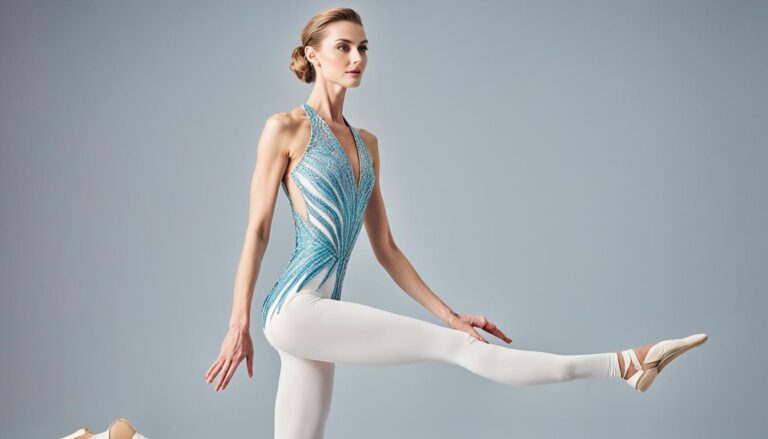Do Mesomorphs Have Big Hips?
Are you curious about the hip size of mesomorphs? As an expert in the field, I’m here to shed some light on this topic. Mesomorphs are individuals with a particular body type characterized by a rectangular bone structure, longer limbs, and a flatter ribcage. They have a natural tendency to stay fit and easily build muscle mass.
But what about their hip size? Let’s explore further.
Key Takeaways:
- Mesomorphs have a rectangular bone structure and tend to have a natural muscularity.
- Their hip size is generally proportionate to their overall body shape.
- There is a variation in hip size within mesomorphs, but it is not necessarily big.
- Hip size can be influenced by factors such as genetics, body composition, and individual differences.
- Embracing body diversity and focusing on overall health and well-being is crucial.
Understanding Body Types
Body types, also known as somatotypes, refer to the hereditary traits that determine an individual’s skeletal frame, body composition, and overall shape. There are three main body types: ectomorph, endomorph, and mesomorph. Understanding these body types can provide valuable insights into factors such as bone structure, muscle mass, and fat distribution.
Ectomorph
Ectomorphs are characterized by their thin and lean build. They often have a rounder bone structure and smaller muscles. Ectomorphs may find it challenging to gain weight and build muscle mass, even with a high-calorie diet and dedicated exercise routine.
Endomorph
Endomorphs tend to have a higher body fat percentage and a pear-shaped appearance. They typically have a triangular bone structure, broader shoulders, and narrower hips. Endomorphs may find it easier to gain weight, particularly in the form of fat, and may need to focus on managing their calorie intake to maintain a healthy body composition.
Mesomorph
Mesomorphs are often considered the ideal body type. They have a rectangular bone structure and long limbs, with a more balanced distribution of muscle and fat. Mesomorphs tend to have an easier time staying fit and building muscle, making them naturally athletic. They can typically achieve a toned and proportionate physique with relative ease.
Understanding body types is helpful for individuals when setting fitness goals, developing personalized workout routines, and making dietary choices that align with their unique genetic predispositions. While body types can provide insights into certain physical traits, it’s essential to remember that everyone’s body is different, and individual variations exist within each body type.
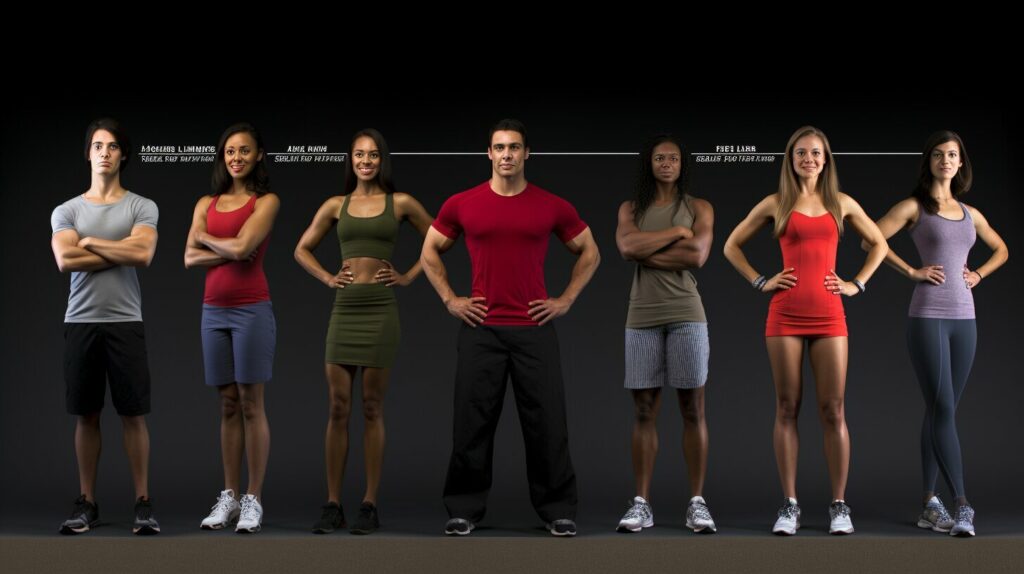
| Body Type | Bone Structure | Muscle Mass | Fat Distribution |
|---|---|---|---|
| Ectomorph | Rounder | Small | Lower |
| Endomorph | Triangular | Moderate | Higher |
| Mesomorph | Rectangular | Higher | Balanced |
Mesomorph Characteristics
Mesomorphs are individuals with unique physical characteristics that set them apart from other body types. They have a higher percentage of muscle mass compared to fat, giving them a naturally athletic and toned appearance. With their rectangular bone structure and long limbs, mesomorphs have a physique that is well-suited for physical activities and exercise.
When it comes to weight gain, mesomorphs have some advantages. They tend to have a faster metabolism, which allows them to maintain their weight more easily. However, this doesn’t mean they can eat anything and not gain weight. Mesomorphs still need to maintain a balanced diet that includes a protein-based approach to support their muscle growth and repair. Including ample fruits and vegetables rich in antioxidants and whole grains in their diet is also important for their overall health and well-being.
Training for mesomorphs should focus on a combination of weight training and cardio exercises. This helps them maintain their muscle mass while also improving their cardiovascular endurance. Engaging in strength training exercises helps mesomorphs build and define their muscles, while cardio exercises help them stay lean and promote overall fitness. It’s important for mesomorphs to find a workout routine that they enjoy and that challenges them physically to achieve the best results.
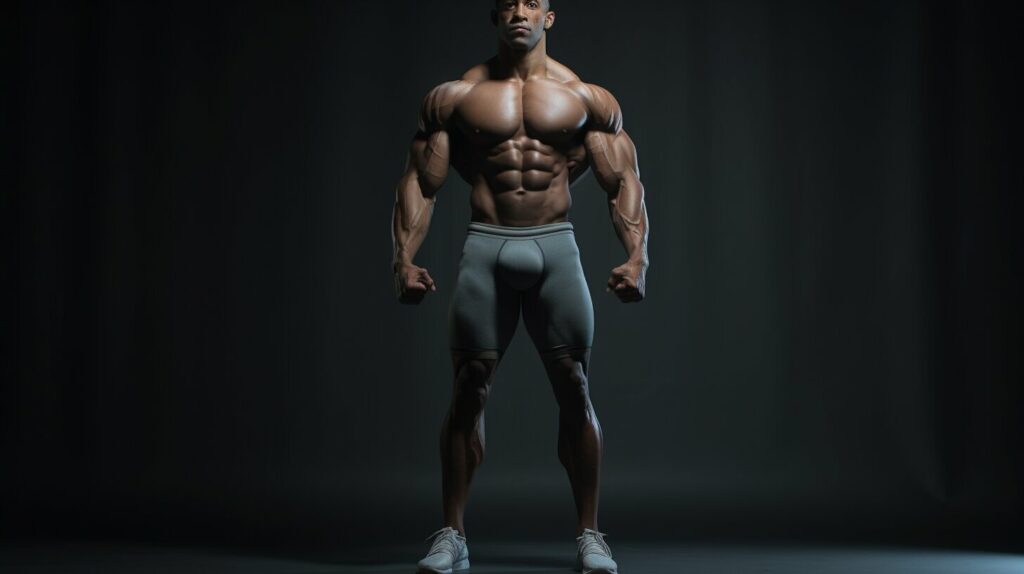
The Benefits of Being a Mesomorph
- Mesomorphs have a naturally athletic physique with well-defined muscles.
- They have a higher metabolism, making it easier for them to maintain their weight.
- Mesomorphs have the ability to build and define their muscles with relative ease.
- They have the potential to excel in physical activities and sports.
Tips for Mesomorphs
- Focus on a balanced diet that includes a protein-based approach for muscle growth and repair.
- Incorporate plenty of fruits and vegetables rich in antioxidants and whole grains for overall health.
- Engage in a mix of weight training and cardio exercises to maintain muscle mass and stay lean.
- Find a workout routine that you enjoy and that challenges you physically to achieve the best results.
| Body Type | Muscle Mass | Fat Percentage | Weight Gain |
|---|---|---|---|
| Mesomorph | High | Low | Average |
| Ectomorph | Low | Low | Difficult |
| Endomorph | Low to High | High | Easy |
Hip Size in Mesomorphs
When it comes to hip size in mesomorphs, there is no specific data available. However, it can be assumed that mesomorphs have a hip size that is proportionate to their overall body shape. Mesomorph women may have an hourglass figure with wider hips, while mesomorph men may have broader shoulders and a narrower waist and hips. This is in line with their rectangular bone structure, which characterizes the mesomorph physique.
It’s important to note that hip size can vary among individuals, even within the same body type. Factors such as genetics, muscle mass, and fat distribution can all contribute to differences in hip size. While mesomorphs are known for their natural muscularity and tendency to stay fit, their hip structure will ultimately depend on their unique genetic makeup and body composition.
In conclusion, mesomorphs do not necessarily have big hips. The hip size in mesomorphs is typically proportionate to their rectangular bone structure. Embracing individual differences and body diversity is key when it comes to promoting body positivity and accepting all body types. Each person’s body is unique, and it’s important to focus on overall health and well-being rather than conforming to societal beauty standards.
| Body Type | Hip Size |
|---|---|
| Mesomorph Women | Hourglass figure with wider hips |
| Mesomorph Men | Broader shoulders, narrower waist and hips |
Quote:
“Each person’s body is unique, and it’s important to focus on overall health and well-being rather than conforming to societal beauty standards.” – Anonymous
Body Type and Hip Shape
Body type plays a significant role in determining hip shape. Ectomorphs, with their rounder bone structure, tend to have wider hips. On the other hand, endomorphs, with their triangular bone structure, often have narrower hips in comparison. Mesomorphs, with their rectangular bone structure, typically have hip shapes that are proportionate to their overall body shape.
Understanding how body type influences hip shape can help individuals embrace and appreciate their unique physique. It is important to remember that there is no “ideal” hip shape, and beauty comes in all sizes and proportions. Celebrating body diversity can foster a more inclusive and positive fitness culture.
Embracing your body type and developing a positive body image is crucial for overall well-being. By setting realistic fitness goals and focusing on overall health and strength, individuals can achieve their desired level of fitness while embracing their unique hip shape. Remember, it’s not about conforming to societal standards, but rather about celebrating your individual body and feeling confident in your own skin.
In conclusion, body type is linked to hip shape, with ectomorphs tending to have wider hips, endomorphs having narrower hips, and mesomorphs having hip shapes that are proportionate to their rectangular bone structure. Embracing body diversity and appreciating individual differences can lead to a more inclusive and positive fitness culture.
| Body Type | Hip Shape |
|---|---|
| Ectomorph | Wider hips |
| Endomorph | Narrower hips |
| Mesomorph | Proportionate hip shape |

Exercise and Hip Size
The role of exercise in determining hip size is a topic of interest for many individuals looking to shape their bodies. While exercise can have an impact on overall weight loss and muscle building, it is important to note that spot reduction is not possible. Engaging in a variety of cardio exercises and weight training can contribute to overall body fitness and muscle tone, but specific exercises alone cannot target and reduce the size of the hips.
Building muscle in specific body parts, such as the hips, requires a combination of exercises that target multiple muscle groups. For example, exercises like squats, lunges, and hip thrusts can help strengthen and tone the muscles in the lower body, including the hips. However, it is crucial to maintain a balanced approach to exercise and focus on overall strength and muscle development rather than solely fixating on the hip area.
To achieve the desired hip size, it is important to have realistic fitness goals and embrace a holistic approach to overall body fitness. This includes maintaining a healthy eating plan that consists of a balance of macronutrients and engaging in regular physical activity. Consulting with a fitness professional can provide personalized guidance and support in developing a targeted exercise routine that aligns with individual goals and body type.
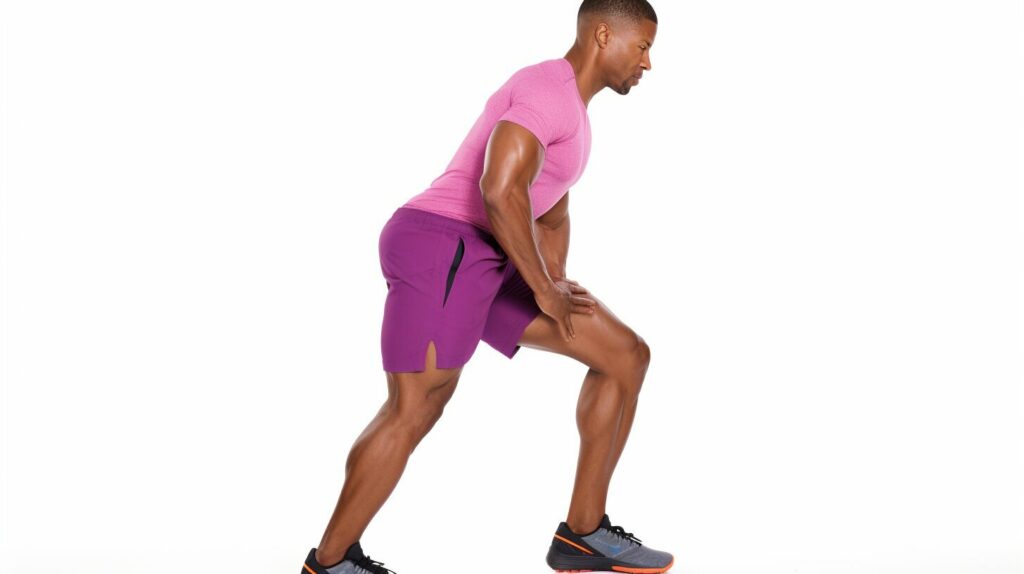
Table: Exercises for Strengthening the Hips
| Exercise | Muscles Targeted |
|---|---|
| Squats | Quadriceps, Hamstrings, Glutes, Hip Adductors |
| Lunges | Quadriceps, Hamstrings, Glutes, Hip Adductors |
| Hip Thrusts | Glutes, Hamstrings |
| Deadlifts | Glutes, Hamstrings, Quadriceps, Lower Back |
| Step-ups | Quadriceps, Hamstrings, Glutes |
It is important to remember that hip size is influenced by various factors such as genetics, overall body composition, and individual differences within body types. Embracing and loving your body for what it is, setting realistic fitness goals, and focusing on overall health and well-being are key in cultivating a positive body image and promoting self-acceptance.
Genetics and Hip Size
When it comes to hip size, genetics and hereditary traits can play a significant role. Just like other body characteristics, hip size is influenced by our genes and the unique traits passed down from our parents. While it is true that mesomorphs, with their rectangular bone structure and natural muscularity, may have a specific hip size tendency, it is important to note that individual variations exist within body types.
Factors such as bone structure, fat distribution, and muscle mass can also contribute to hip size. These elements are determined by our genetic makeup and can vary from person to person, even within the same body type. So, while some mesomorphs may have wider hips, others may have a more proportionate hip size. It is essential to remember that there is no standard or ideal hip size for mesomorphs or any other body type.
Understanding the impact of genetics on body shape and composition can help us set realistic expectations and goals. Instead of striving for a specific hip size, it is more empowering to focus on overall health and well-being. Embracing our individual differences and celebrating body diversity can lead to a more positive and inclusive fitness culture. Let’s appreciate and love our unique bodies for what they are, and prioritize our physical and mental well-being above conforming to societal beauty standards.
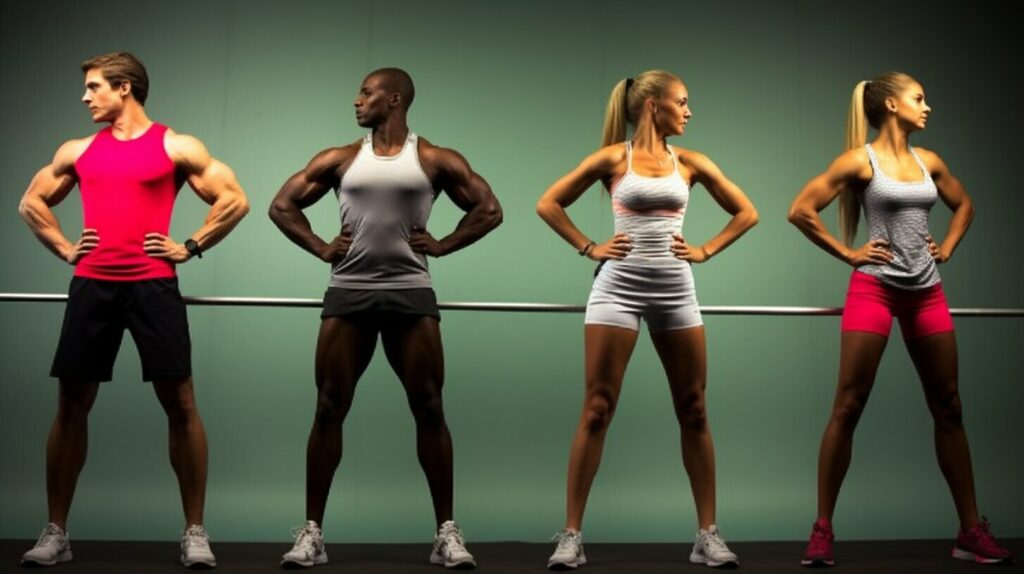
Table: Role of Genetics in Body Shape and Composition
| Genetic Factors | Impact on Body Shape | Impact on Body Composition |
|---|---|---|
| Hereditary Traits | Determines bone structure and overall body shape. | Influences fat distribution and muscle mass. |
| Genetic Predisposition | Sets a general tendency for certain body characteristics. | Can impact the overall size and proportions of different body parts. |
| Individual Variations | Individual differences within body types. | Factors such as metabolism and lifestyle choices can also influence body composition. |
As shown in the table above, genetics contribute to both body shape and composition. While we cannot change our genetic makeup, we can focus on leading a healthy lifestyle that includes regular exercise, balanced nutrition, and self-acceptance. By understanding and embracing the impact of genetics on our bodies, we can work towards our individual goals and cultivate a positive body image.
Tips for Achieving the Desired Hip Size
When it comes to achieving the desired hip size, focusing on overall body fitness is key. Incorporating a combination of healthy eating and targeted exercises can help you reach your goals. Here are some tips to help you get started:
1. Maintain a Balanced Diet
Eating a balanced diet is essential for overall health and achieving your desired hip size. Focus on consuming whole foods that are nutrient-dense, such as fruits, vegetables, lean proteins, and whole grains. Avoid processed foods and excessive sugar intake, as these can hinder your progress. Remember, a healthy diet not only supports your hip goals but also contributes to overall well-being.
2. Incorporate Targeted Exercises
Include exercises that specifically target the hip area in your fitness routine. Squats, lunges, and hip thrusts are excellent exercises that can help increase muscle tone and strength in the hips. Additionally, engaging in activities like dancing, pilates, or yoga can also contribute to developing lean muscles in the hip region. Remember to consult with a fitness professional to ensure proper form and avoid injury.
3. Focus on Overall Body Fitness
While it is important to target the hip area, it is equally important to focus on overall body fitness. Engage in a mix of cardiovascular exercises, strength training, and flexibility exercises to improve your overall physique. Working on your entire body will not only help you achieve your desired hip size but also enhance your overall strength, endurance, and fitness level.
Remember, everyone’s body is unique, and achieving the desired hip size may take time. Be patient, consistent, and listen to your body’s needs. Celebrate your progress along the way and embrace your body for its individual beauty.

| Targeted Exercises for Hip Size | Repetitions | Sets |
|---|---|---|
| Squats | 12-15 | 3-4 |
| Lunges | 10-12 (each leg) | 3-4 |
| Hip Thrusts | 12-15 | 3-4 |
Embracing Your Body Type
When it comes to fitness and body image, it’s crucial to embrace your unique body type and set realistic goals for yourself. Instead of striving for a specific hip size or conforming to societal beauty standards, focusing on self-acceptance and body positivity can lead to a healthier and happier lifestyle.
Embracing your body type means understanding that each individual is different and has their own strengths and characteristics. Whether you have a mesomorph, ectomorph, or endomorph body type, it’s important to recognize that no one body shape is superior to another.
Setting realistic fitness goals is key to maintaining a positive mindset. Instead of fixating on achieving a specific hip size, focus on overall body fitness and improving strength and muscle tone. Celebrate the progress you make along your fitness journey, regardless of whether it aligns with societal standards of beauty.
The Importance of Self-Acceptance and Body Positivity
Self-acceptance plays a vital role in fostering a positive body image. Embracing your body type and size allows you to appreciate yourself and your unique features. Remember, your worth is not determined by your hip size or any other physical attribute.
Body positivity involves loving and accepting yourself as you are and celebrating the diversity of body shapes and sizes. It’s about focusing on what your body can do rather than how it looks. Shift your mindset to appreciate the strength and capabilities of your body, rather than fixating on perceived flaws.
No matter your body type, it’s important to prioritize self-care and your overall well-being. Engage in activities that bring you joy and make you feel good. Surround yourself with positive influences that promote self-acceptance and body positivity.
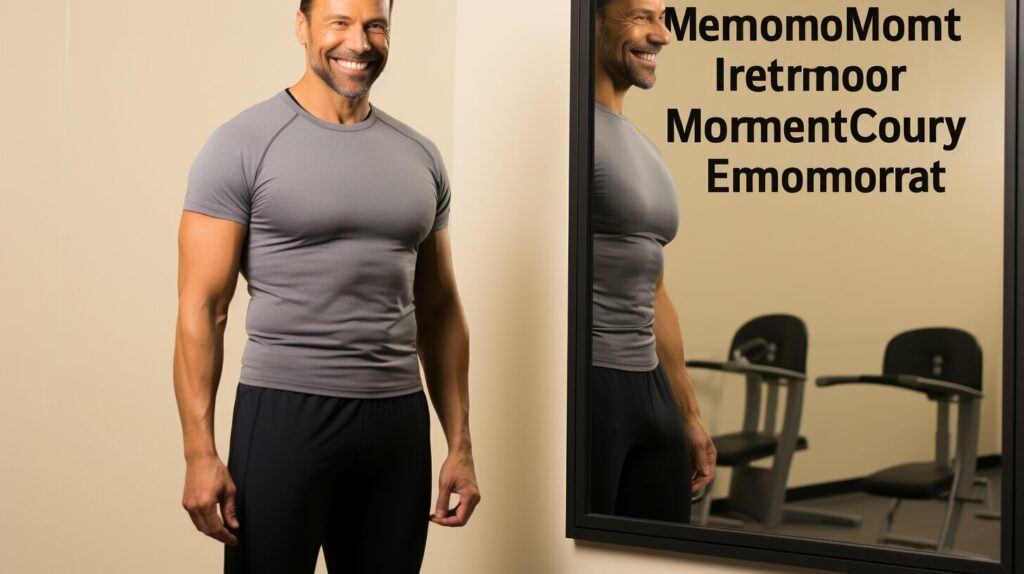
| Benefits of Embracing Your Body Type | Tips for Practicing Self-Acceptance and Body Positivity |
|---|---|
| – Improved self-confidence | – Challenge negative body talk and internalized messages |
| – More balanced approach to health and fitness | – Surround yourself with positive body image advocates |
| – Reduced stress and anxiety related to body image | – Focus on self-care and prioritize activities that make you feel good |
| – Increased overall well-being and happiness | – Celebrate your body’s capabilities and strength |
The Role of Genetics in Body Shape
Genetics play a significant role in determining an individual’s body shape and composition. Our genetic predisposition influences how our bodies store fat, distribute muscle mass, and develop our skeletal structure. While lifestyle factors such as diet and exercise can have an impact on body composition, it is important to recognize that genetics also play a crucial role.
“Your genes determine how your body looks and how it responds to certain behaviors,” says Dr. Emma Johnson, a geneticist specializing in body composition. “You may have inherited a genetic predisposition for broader hips or a leaner frame, and that will influence your body shape to some extent.”
It’s important to note that genetic factors don’t necessarily determine the entire outcome. Our genes provide a blueprint, but our lifestyle choices and environmental factors also play a role. By understanding our genetic predispositions, we can make informed decisions about our diet and exercise routines that align with our unique body shape.
While we can’t change our genes, we can work with them to achieve our fitness goals in a healthy and sustainable manner. Embracing our genetic makeup and focusing on overall well-being can lead to a more positive body image and a healthier relationship with our bodies.
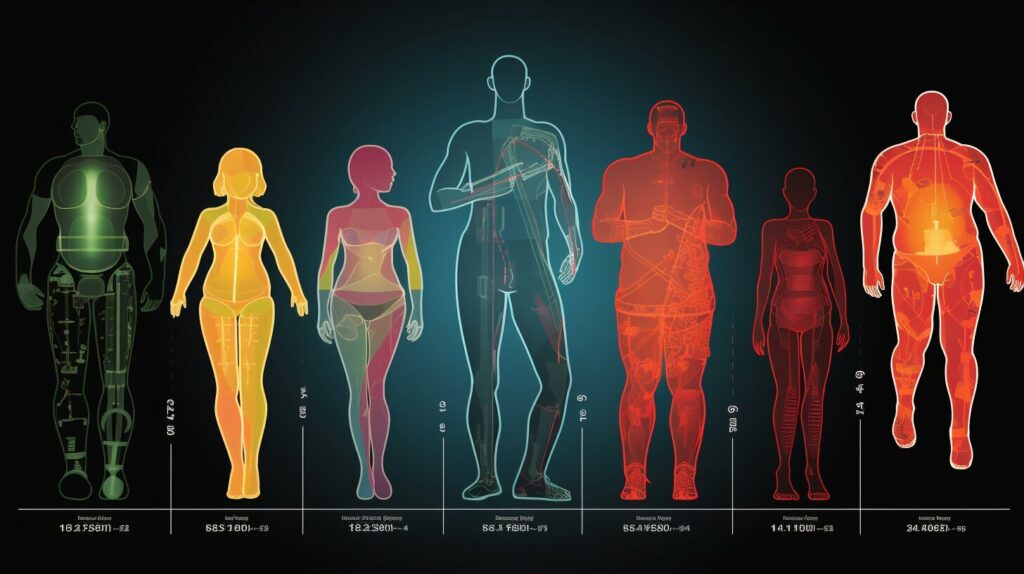
Genetic Factors that Influence Body Shape
Various genetic factors contribute to body shape, including:
- Gene variants linked to fat distribution
- Gene variants associated with muscle development
- Gene variants that influence bone structure and density
- Genetic variations that affect metabolism and energy expenditure
These genetic variations create an individual genetic predisposition that shapes our bodies and can contribute to differences in body types and proportions.
Understanding and Accepting Genetic Predispositions
Recognizing the impact of genetics on body shape can help individuals set realistic fitness goals and develop a healthy body image. It’s important to remember that everyone’s genetic makeup is unique, and comparisons to others should be avoided.
By embracing our individual genetic predispositions, we can focus on personal growth and improving our overall health and well-being. A balanced approach to fitness that considers both our genetic factors and lifestyle choices will help us achieve sustainable results.
The Importance of Individual Differences
In the world of fitness and health, it is crucial to recognize and appreciate the importance of individual differences. Each person’s body is unique, with its own set of characteristics, strengths, and challenges. Embracing the concept of body diversity allows us to move away from unrealistic beauty standards and cultivate a more inclusive and empowering fitness culture.
Body diversity celebrates the multitude of shapes, sizes, and proportions that exist among individuals. It acknowledges that there is no one “ideal” body type and that everyone’s journey towards health and well-being is personal and unique. By embracing individual differences, we can shift the focus from comparing ourselves to others to understanding and appreciating what makes us unique.
A personalized fitness approach is key to supporting individual differences. It recognizes that what works for one person may not work for another. By tailoring fitness programs and strategies to meet the specific needs and goals of each individual, we can create a more effective and sustainable path towards a healthy and balanced lifestyle.
In summary, body diversity and recognizing individual differences are essential aspects of promoting a positive body image and fostering a healthier relationship with fitness and health. Embracing our uniqueness allows us to set realistic goals, appreciate our bodies for what they can do, and focus on overall well-being rather than conforming to societal expectations. Let us celebrate the beauty of diversity and prioritize personalized fitness approaches that honor the individuality of each person.

Conclusion
In conclusion, as a mesomorph, your hip size is not predetermined to be big. Your body type, with its rectangular bone structure and natural muscularity, does not necessarily mean you will have larger hips. Hip size is influenced by various factors, including genetics, overall body composition, and individual differences within body types.
It is important to embrace your mesomorph body type and love your body for what it is. Instead of conforming to societal beauty standards, focus on setting realistic fitness goals and prioritizing overall health and well-being. Celebrate the uniqueness of your body and practice body positivity.
Remember, body diversity is something to be celebrated. Every individual has their own unique body shape and size, and there is no one-size-fits-all approach to fitness and health. Embrace and appreciate the individual differences among people, and cultivate a more inclusive and positive fitness culture.
By embracing your mesomorph body, celebrating body diversity, and embracing individual differences, you can embark on a journey of self-acceptance and create a healthier and happier lifestyle for yourself.
FAQ
Do Mesomorphs have big hips?
Hip size in mesomorphs is typically proportionate to their overall body shape. While there is no specific data on hip size in mesomorphs, it can be assumed that their hip size is normal and in line with their rectangular bone structure.
How do body types affect hip shape?
Body types, such as ectomorphs, endomorphs, and mesomorphs, have different skeletal frames that can influence hip shape. Ectomorphs may have wider hips, endomorphs tend to have narrower hips, and mesomorphs have a hip shape that is proportionate to their rectangular bone structure.
How does exercise impact hip size?
Exercise can promote overall weight loss and muscle building, which may affect hip size. While targeted exercises can help build muscle in specific body parts, such as the hips, it is important to note that spot reduction is not possible. Engaging in a mix of cardio exercises and weight training can contribute to overall body fitness and muscle tone.
How much do genetics influence hip size?
Genetics play a significant role in determining an individual’s body shape and composition, including hip size. While lifestyle factors like diet and exercise can influence body composition to some extent, genetic predispositions can impact the overall shape and size of different body parts.
What can I do to achieve my desired hip size?
Achieving the desired hip size requires a holistic approach to overall body fitness, including maintaining a healthy eating plan that includes a balance of macronutrients and regular exercise. While targeted exercises may help build muscle in specific body parts, it is important to focus on overall strength and muscle tone. Consulting with a fitness professional can provide personalized guidance and support in achieving specific goals.
How can I embrace my body type?
It is important to embrace your body type and set realistic fitness goals. Each body type has its own unique characteristics and strengths. Rather than focusing on changing your body type, it is more empowering to work towards building strength, improving overall fitness, and cultivating body positivity. Accepting and loving your body for what it is can lead to a healthier and happier lifestyle.
What role do genetics play in body shape?
Genetics play a significant role in determining an individual’s body shape and composition. While lifestyle factors such as diet and exercise can influence body composition to some extent, it is important to recognize that genetic predispositions can impact the overall shape and size of different body parts. Understanding and accepting these genetic factors can help in setting realistic fitness goals and maintaining a positive body image.
Why is it important to embrace individual differences?
It is important to recognize and celebrate individual differences in body shape and size. Each person’s body is unique, and there is no one-size-fits-all approach to fitness and health. Embracing body diversity and focusing on individual strengths can lead to a more inclusive and empowering fitness culture. Personalized fitness approaches that consider individual differences can help individuals achieve their specific goals and improve overall well-being.



